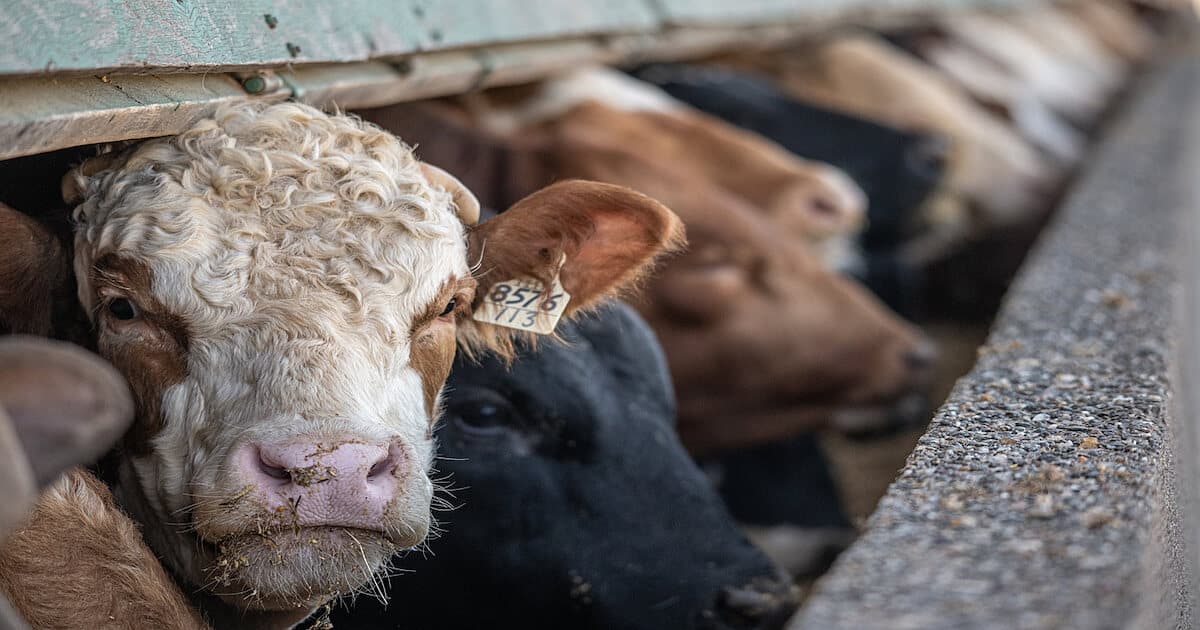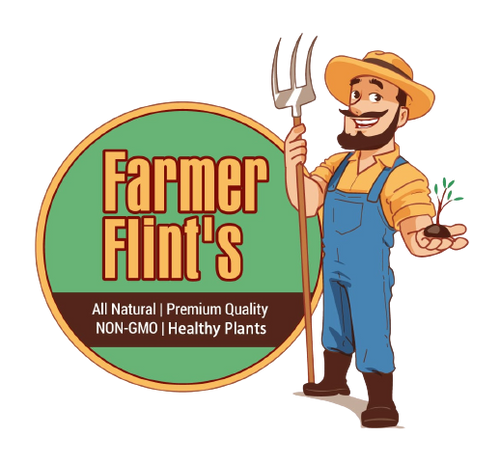Introduction
Climate change is one of the most pressing issues facing our planet today. The increasing temperatures and changes in weather patterns are affecting various industries and sectors. One such sector that is significantly impacted is livestock farming. As an individual who is closely associated with the livestock farming industry, I have seen firsthand how climate change poses serious challenges. In this blog post, I want to discuss how rising temperatures, frequent droughts, wildfires and other extreme weather events due to climate change impact livestock farming operations. I will also share some strategies that farmers are adopting to build resilience against climate change impacts.
Impact on grazing lands and pastures
One of the major ways climate change affects livestock farming is by degrading grazing lands and pastures. Rising temperatures and prolonged droughts are reducing the availability of quality forage for grazing animals like cattle. This poses serious risks to their health and productivity. According to research, rising CO2 levels are also lowering the protein content in many grass varieties commonly used for grazing. With less nutritious feed available naturally, livestock are more vulnerable to diseases.
Here in the western United States where I operate my cattle ranch, we have experienced several multi-year droughts in the past two decades alone. Vast grazing lands that were once productive are now struggling to support the grass required to feed our herds. During drought periods, what little feed is available also tends to be of inferior quality with low protein and energy levels. This forces farmers to provide costly supplemental feed even in summer months. The impact of recurrent droughts on pasture quality was very evident during our property visits last season. Large areas that were biodiverse grasslands even a few years ago have now transformed into patches of dry, brittle grass or bare soil.
Extreme heat is another major outcome of climate change jeopardizing livestock wellbeing. Higher temperatures place additional stress on animals, making them more susceptible to heat strokes. Cattle and other grazing livestock have difficulty thermoregulating at temperatures above 80°F. We have to be extra vigilant during heat waves and provide shade structures, sprinklers and unlimited access to cool drinking water. The financial burden of these measures adds to production costs. Heat stress also tends to decrease fertility, growth and milk yields. It can even trigger embryonic deaths in cattle. During the intense summer heat last year, conception rates on our ranch dipped to concerning lows.
Rising sea levels and coastal flooding
Coastal livestock farms are threatened by rising sea levels and increased flooding due to climate change. Many pastures and grazing areas in low-lying regions risk permanent inundation if sea level rise projections hold true. Here in California, I know of dairy farms that have already been compelled to relocate operations farther inland following repetitive flooding of coastal pastures and infrastructure damage from storms. The financial stress of such mandatory relocations is unsustainable for some small family farms.
Higher storm surges penetrating farther inland also contaminate freshwater sources and destroy fodder stockpiles. After a major weather event, feeding livestock with the available resources becomes a challenge until external aid arrives. In 2012, Hurricane Sandy wreaked havoc on the eastern seaboard claiming the lives of thousands of livestock as pastures and barns went under flood waters. The recovery process length was further delayed by spoilage of hay and silage supplies stuck in the inundated areas for weeks. While insurance policies provide some relief, the emotional trauma for farmers is immeasurable. With the climate crisis intensifying, we can expect such nightmarish scenarios to play out with greater frequency and severity going forward if diligent action is not taken.
Wildfires fueled by climate change
As temperatures climb and precipitation patterns become erratic under climate change, wildfires have been burning larger areas across the globe each year. Here in the western United States, we have faced some of the worst wildfire seasons on record in the past decade. Besides posing threats to lives and property, these massive wildfires are destroying forage lands at an alarming rate. Not only does this reduce available grazing areas for livestock operations, but regrowth of vegetation also takes significant time post fire.
Around five years ago, a large wildfire raged through parts of our ranch. We lost several sections of prime pastureland that supported a large segment of our cattle herd originally. It has only been in the last couple of seasons that we have seen new shoots of grass reappearing in those blackened areas. Till then, we had to rely more on costly hay and feed to substitute the lost grazing capacity. Wildlife fires also threaten existing hay and silage stockpiles that are critical during droughts or winters. What's worse is that climate change models indicate fire seasons will only lengthen in the coming decades with drier, hotter conditions prevailing for a major duration each year. As a rancher, this is an alarming prospect.
Water resource challenges
Access to adequate water sources is crucial for livestock operations. However, climate change is worsening drought patterns while increasing our water needs simultaneously. Higher temperatures result in more water being lost through evaporation from soil and evapotranspiration from plants and animals. Livestock also require additional water intake to combat heat stress. At the same time, below average precipitation and melting snowpacks are diminishing surface and groundwater supplies across many regions worldwide.
Here in the western United States, water shortages are becoming very real threats. Our local reservoir levels have dropped alarmingly over the past couple of years of drought. We have been forced to tap deeper acquifers on our property at greater pumping costs. The groundwater table in our area unfortunately shows a declining long term trend. If not addressed immediately, degraded water security will render many rangelands unsuitable for grazing in the coming decades with wells and streams going dry. This is a grave concern for our future livelihood and that of subsequent generations hoping to take over ranching responsibilities.

Increased disease prevalence and new pathogens
As the Earth's temperatures continue rising due to unrestricted greenhouse gas emissions, livestock are growing more susceptible to existing infectious diseases and new pathogens. Warming tropical and sub-tropical regions allow viruses and parasites to spread farther as their survival zones expand poleward. At the same time, climate change is weakening farm animals' natural disease resistance abilities due to factors like heat stress, poor nutritional quality of feed and deteriorating habitat conditions in native grazing areas. Hence, livestock operations located even in temperate regions now face new disease threats.
Here where I operate my ranch in the western United States, we had our first confirmed cases of bluetongue virus in cattle a few years back. This disease typically affects sheep and goats in tropical areas but is now spreading north as warming allows its insect vector, biting midges, to survive our winters. Thankfully with prompt vet intervention and quarantine measures, we prevented an outbreak. However, similar new pathogens may not be so lucky in gaining a foothold as climate change intensifies. Disease surveillance and preparedness will need urgent upgrading on farms. At the same time, limiting global warming itself through mitigation action remains our best hope to constrain disease spread in the long run.
Emissions from livestock farming
While the livestock sector is significantly impacted, it also contributes a portion of overall global greenhouse gas emissions. Ruminants like cattle produce methane as a byproduct of their enteric fermentation digestive process. Manure management on large concentrated animal feeding operations is another source of methane and nitrous oxide emissions. According to the FAO, livestock species contribute roughly 14.5% of all human-induced greenhouse gas emissions globally each year. While not the largest sector, it is an area where mitigation potential exists through improved breeds, diets and manure handling practices.
FAQs
FAQ 1: How does heat stress impact livestock?
Higher temperatures cause heat stress in livestock which affects their health and productivity. Animals find it difficult to regulate their body temperature when temperatures rise above 80°F. This places additional physiological strain on them and makes them vulnerable to heat strokes. Heat stress decreases fertility and conception rates in cattle as it can lead to embryonic deaths. It also lowers growth rates and reduces milk production in dairy cows. During heat waves, extra precautions need to be taken like providing shade, sprinklers and unlimited access to cool drinking water.
FAQ 2: What are some impacts of reduced water availability?
Water shortages severely impact livestock operations that depend on local sources for their herds. Lower surface water levels in reservoirs and reduced groundwater tables jeopardize water security. More water is lost through evaporation from soil and plants under hotter climate conditions too. At the same time, livestock require additional water intake to cope with heat stress. Where water sources dry up or pumping becomes unviable due to declining aquifers, ranchers are forced to reduce herd sizes or find alternate grazing areas. This can even make some ranches unsuitable to continue operations over the long run if water scarcity worsens.
FAQ 3: How does degradation of grazing lands affect cattle farming?
Healthy and productive pastures are critical for raising cattle and other grazing livestock. However, climate change is degrading rangelands through prolonged droughts, heat waves and increased wildfires. The availability and nutritional quality of the forage available gets compromised with less protein in grass. Ranchers have to provide costly supplemental feed even during summer months. Overgrazing or erosion can further affect soil hydrology and plant regrowth abilities making land recovery after climate shocks difficult. Large areas of former grasslands and pastures risk turning into barren patches unable to support herds.
FAQ 4: What new livestock diseases emerge due to climate change?
Changes in climate expand the habitable zones of disease vectors like biting insects northwards. This allows pathogens typically found in warmer regions to spread and establish in new livestock rearing geographies. An example is the bluetongue virus crossing into the United States. Warmer conditions also weaken animals' natural immunity making them more susceptible to existing illnesses. Heat stressed livestock essentially becomes easier hosts for infectious diseases to gain a foothold. Improved disease surveillance and preparedness are urgently needed on farms to tackle emerging health threats under climate change.
FAQ 5: How can livestock farming mitigate greenhouse gas emissions?
The sector emits potent heat trapping gases like methane and nitrous oxide. Some mitigation strategies involve using feed additives and managing manure in ways that curb methane from enteric fermentation and manure respectively by 20-30%. Transitioning to renewable energy sources at farms can cut direct emissions too. Improved grazing practices where herds are regularly rotated help capture more carbon in rangeland soils too. Breeding programs evaluation feeding regimens to select low emission livestock also hold promise long term. While individual farmer impact may seem small, concerted global adoption can significantly help slowing climate change.
FAQ 6: What adaptation strategies do ranchers employ?
Ranchers are exploring various ways to build resilience of their operations against ongoing climate impacts. This includes measures like diversifying forage varieties, planting drought resistant native species, incorporating trees through silvopasture, rotating herds for better land management, controlled burns to remove invasive weeds etc. The goal is to produce nutritious forage even during dry spells and protect soil health, hydrology and biodiversity through planned practices. Some are also adopting strategies like managing herd sizes based on seasonal pasture conditions and supplementation with emergency feed reserves. Continual climate-smart improvements can help sustainability of livestock farming over the long run.
Conclusion
In summary, climate change poses formidable challenges to the global livestock sector through its widespread impacts like rising temperatures and shifts in precipitation patterns. While adaptation is crucial, limiting further global warming also remains important for avoiding worst scenarios. Ranchers are increasingly employing innovative resilience building strategies. Simultaneously, mitigation efforts across agriculture can help slow forces driving the climate crisis. With urgency and coordinated global action on both fronts, we stand a better chance of sustainably feeding a growing human population while safeguarding livelihoods dependent on livestock rearing well into the future.


